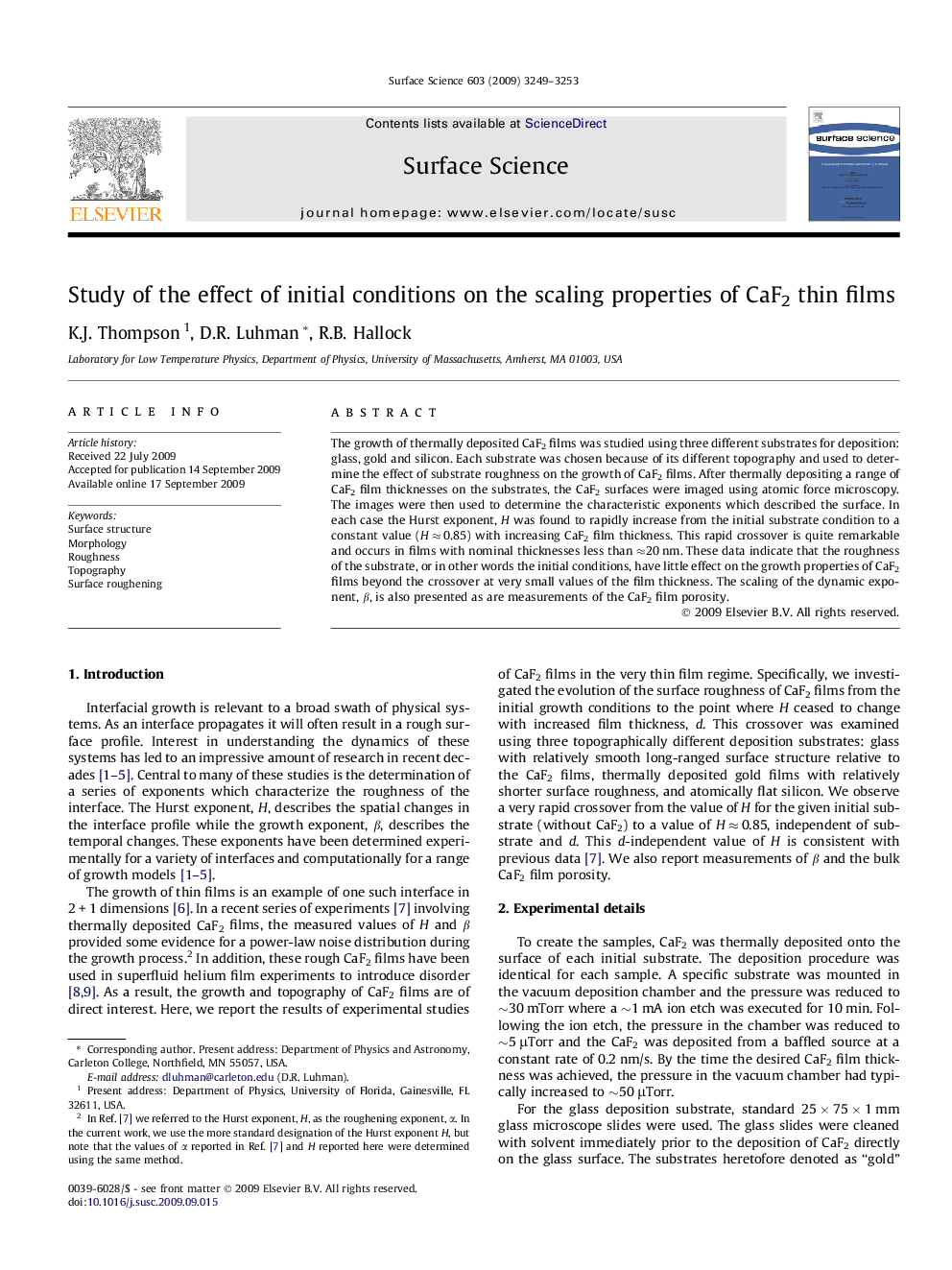| Article ID | Journal | Published Year | Pages | File Type |
|---|---|---|---|---|
| 5423910 | Surface Science | 2009 | 5 Pages |
Abstract
The growth of thermally deposited CaF2 films was studied using three different substrates for deposition: glass, gold and silicon. Each substrate was chosen because of its different topography and used to determine the effect of substrate roughness on the growth of CaF2 films. After thermally depositing a range of CaF2 film thicknesses on the substrates, the CaF2 surfaces were imaged using atomic force microscopy. The images were then used to determine the characteristic exponents which described the surface. In each case the Hurst exponent, H was found to rapidly increase from the initial substrate condition to a constant value (H â 0.85) with increasing CaF2 film thickness. This rapid crossover is quite remarkable and occurs in films with nominal thicknesses less than â20 nm. These data indicate that the roughness of the substrate, or in other words the initial conditions, have little effect on the growth properties of CaF2 films beyond the crossover at very small values of the film thickness. The scaling of the dynamic exponent, β, is also presented as are measurements of the CaF2 film porosity.
Related Topics
Physical Sciences and Engineering
Chemistry
Physical and Theoretical Chemistry
Authors
K.J. Thompson, D.R. Luhman, R.B. Hallock,
